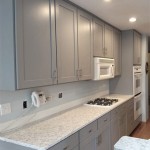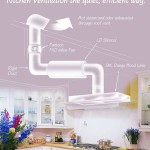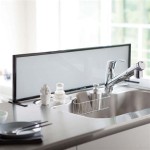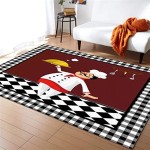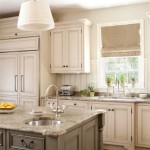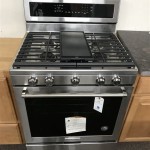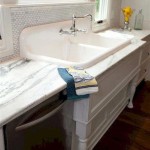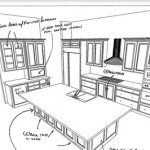Kitchen Upper Cabinets Design: Optimizing Space and Style
Kitchen upper cabinets are a fundamental element of kitchen design, offering crucial storage solutions and contributing significantly to the overall aesthetic. Thoughtful planning and execution are essential to maximize their utility and ensure they complement the kitchen's style. This article explores key considerations in designing kitchen upper cabinets, encompassing functionality, spatial awareness, material selection, and design trends. It aims to provide a comprehensive understanding of the factors influencing the design and installation of upper cabinets to achieve a harmonious and efficient kitchen space.
The primary function of upper cabinets is to provide easily accessible storage for frequently used kitchen items such as dishes, glassware, dry goods, and cooking utensils. Strategic placement and design can significantly impact workflow and efficiency within the kitchen. The height, depth, and configuration of upper cabinets should be carefully considered based on the user's needs and the kitchen's layout.
Optimizing Storage and Accessibility
Effective upper cabinet design centers on maximizing storage capacity while ensuring items are easily accessible. Several design elements contribute to achieving this balance. Adjustable shelves are a primary consideration, allowing for customization to accommodate items of varying heights. This adaptability avoids wasted vertical space and allows for efficient organization. Pull-out shelves are another valuable feature, particularly for deeper cabinets. They bring items at the back of the cabinet within easy reach, eliminating the need to reach and rummage, thereby enhancing accessibility and preventing items from being forgotten or lost in the depths of the cabinet.
Cabinet door swing direction also impacts accessibility. Consider the flow of traffic within the kitchen and the proximity of adjacent appliances and cabinets when determining the appropriate hinge placement. For instance, a cabinet located next to a refrigerator might benefit from a hinge that opens away from the refrigerator, preventing potential collisions or obstructions. Lift-up doors, which open vertically, are particularly useful in tighter spaces as they do not obstruct the walkway when open. Corner cabinets often present a challenge in terms of accessibility. Utilizing solutions such as lazy Susans or corner cabinet pull-outs can significantly improve the usability of these often-awkward spaces.
In incorporating storage solutions, it is necessary to consider the weight-bearing capacity of the cabinets and shelves. Select appropriate materials and construction methods to ensure the cabinets can safely support the intended load. Distributing weight evenly across the shelves is also essential to prevent sagging or damage over time. Regularly reviewing and decluttering cabinet contents also contributes to maintaining optimal storage and accessibility.
Spatial Considerations and Ergonomics
Properly assessing the kitchen's spatial dimensions is crucial for designing upper cabinets that fit seamlessly and enhance functionality. Ceiling height, wall length, and the placement of windows and appliances all influence the size, shape, and arrangement of upper cabinets. Standard upper cabinet height typically places the bottom edge 18 inches above the countertop, providing ample workspace while allowing for easy access to the cabinets. However, this dimension can be adjusted based on the user's height and preferences. In kitchens with lower ceilings, shorter upper cabinets or open shelving may be more appropriate to avoid a cramped feeling. Conversely, in kitchens with high ceilings, taller cabinets or stacked cabinets, reaching all the way to the ceiling, can maximize storage and create a more visually appealing design.
The depth of upper cabinets also impacts both storage capacity and user comfort. Standard upper cabinet depth is typically 12 inches, but deeper cabinets may be used to store larger items or to align with deeper base cabinets. However, deeper cabinets can make it more difficult to reach items at the back, so pull-out shelves or roll-out trays may be employed to mitigate this issue. The placement of upper cabinets in relation to the kitchen work triangle – the sink, stove, and refrigerator – is an important ergonomic consideration. Cabinets should be positioned within easy reach of these work zones to minimize unnecessary movement and improve efficiency. Consider placing dishware near the dishwasher and cookware near the stove to streamline the workflow. Proper lighting under the upper cabinets is also essential for illuminating the countertop and providing a safe and comfortable work environment. LED strip lights are a popular choice for under-cabinet lighting due to their energy efficiency and long lifespan.
Furthermore, the overall aesthetic balance of the kitchen is influenced by the spacing and proportions of the upper cabinets. Too many upper cabinets can make the kitchen feel crowded, while too few can result in inadequate storage. Consider incorporating open shelving or glass-front cabinets to break up the monotony of solid cabinet doors and create a more visually appealing design.
Materials, Finishes, and Design Styles
The selection of materials and finishes for upper cabinets is a critical aspect of kitchen design, impacting both the aesthetics and durability of the cabinets. Common materials include solid wood, wood veneer, plywood, MDF (medium-density fiberboard), and laminate. Solid wood offers a natural look and feel, but it can be more expensive and susceptible to moisture damage. Wood veneer provides a similar aesthetic at a lower cost, while plywood and MDF offer good stability and resistance to warping. Laminate is a cost-effective option that is easy to clean and available in a wide range of colors and patterns.
Cabinet finishes protect the material and enhance its appearance. Popular finishes include paint, stain, and lacquer. Paint provides a durable and versatile finish that can be customized to match any color scheme. Stain enhances the natural grain of the wood and provides a warm, inviting look. Lacquer is a high-gloss finish that is durable and easy to clean, but it can be more susceptible to scratches. The choice of finish should be based on the desired aesthetic, the material of the cabinets, and the level of durability required.
The design style of upper cabinets should complement the overall style of the kitchen. Traditional kitchens often feature raised-panel cabinet doors, ornate hardware, and decorative moldings. Modern kitchens typically feature flat-panel cabinet doors, minimalist hardware, and clean lines. Transitional kitchens blend elements of both traditional and modern styles, often featuring shaker-style cabinet doors and a neutral color palette. Other popular kitchen styles include farmhouse, industrial, and contemporary. The choice of cabinet style should reflect the homeowner's personal taste and the overall design aesthetic of the home. Hardware selection, including knobs and pulls, provides an opportunity to add personality and detail to the upper cabinets. Choose hardware that is both functional and aesthetically pleasing, and consider the overall style of the kitchen when making your selection.
In conclusion, designing kitchen upper cabinets requires a careful consideration of functionality, spatial awareness, material selection, and design trends. By prioritizing storage optimization, accessibility, ergonomics, and aesthetic harmony, homeowners can create a kitchen that is both efficient and visually appealing. Careful planning and attention to detail are essential to achieving a cohesive and functional kitchen design.

9 Ways To Efficient Stylish Kitchen Cabinet Designs

How To Decide Between Upper Kitchen Cabinets Open Storage And More

Wall Cabinet Cupboard Types And Configurations Trendstyle

11 Times You Should Hang Your Upper Kitchen Cabinets Higher

Modern Kitchen Remodelling Ideas Home Interior Designs Design Color Cabinetry Plans

Top Trends In Kitchen Cabinet Design You Need To Know

Gray Upper Cabinets And Black Lower Design Ideas

17 Open Shelves Kitchen Cabinet Designs No Upper Cabinets Home Decor Singapore

Conquering Kitchen Chaos How To Design Corner Cabinets

Open Shelving Vs Upper Cabinets In Kitchen Pros And Cons
Related Posts

